The Complete Guide to Korean BBQ at Home
Korean BBQ is more than just a meal—it’s an experience. Rooted in centuries-old traditions, this beloved culinary practice brings friends and family together around a sizzling grill, sharing not just food but laughter and stories. Imagine the savory aroma of marinated meats mingling with the rich, smoky scent of charcoal, all while you enjoy a spread of vibrant side dishes, or banchan. It’s not just about the food; it’s about the joy of cooking and eating together.
Knowing how to do Korean BBQ is a fantastic way to enjoy this communal dining experience. It allows you to tailor the meal to your tastes and dietary needs, and it’s surprisingly fun and easy to set up. Plus, it’s a unique way to impress guests and create memorable dining moments.

Whether you’re a seasoned chef or a cooking newbie, our guide will walk you through everything you need to know to host the perfect Korean BBQ at home. From choosing the right equipment to mastering marinades, we’ve got you covered. So, let’s fire up the grill and dive into the delicious world of Korean BBQ!
What is Korean BBQ?
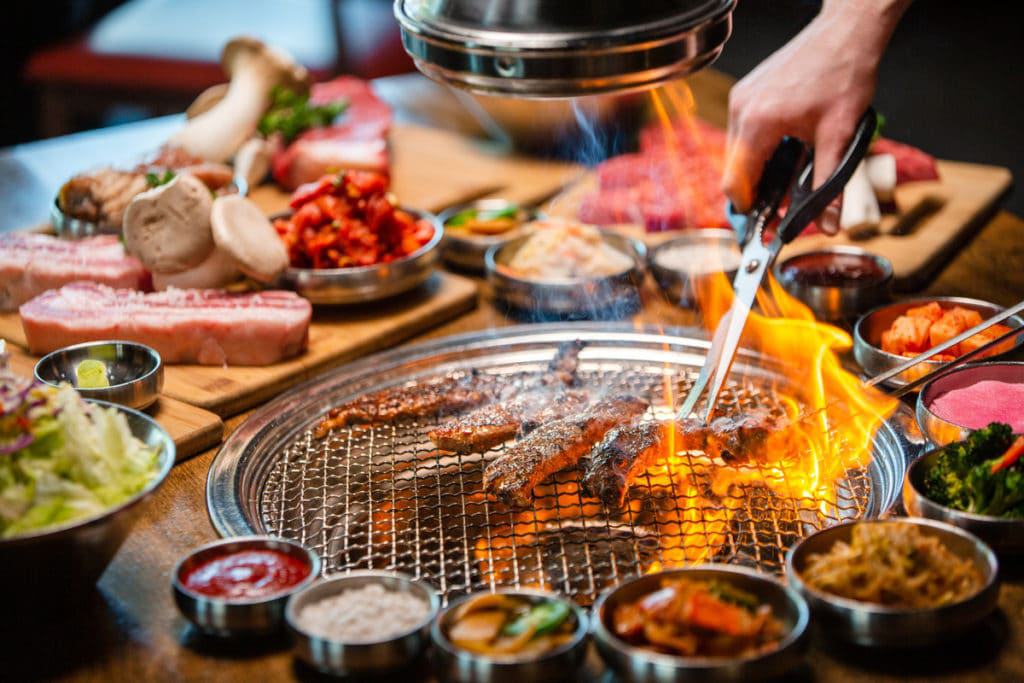
Korean BBQ, or gogi-gui, is a popular method of grilling meat, typically at the dining table. Unlike Western BBQ, where large cuts of meat are slow-cooked over indirect heat, Korean BBQ involves grilling bite-sized pieces of meat over a charcoal or gas grill. The meat, which can be anything from beef and pork to chicken and seafood, is often marinated in a blend of soy sauce, garlic, sugar, and sesame oil, creating a rich and flavorful profile.
One of the unique aspects of Korean BBQ is the communal dining experience. Diners gather around the grill, cooking their own meat and pairing it with a variety of banchan (side dishes) such as kimchi, pickled vegetables, and steamed egg. This interactive style of eating not only enhances the flavor but also fosters a sense of togetherness and fun.
The global popularity of Korean BBQ can be attributed to its delicious flavors, the interactive dining experience, and the rise of Korean pop culture. From K-dramas to K-pop, Korean culture has taken the world by storm, and with it, the craving for authentic Korean cuisine. Whether you’re a foodie or a fan of Korean culture, Korean BBQ offers a delicious and immersive way to enjoy a meal with friends and family.
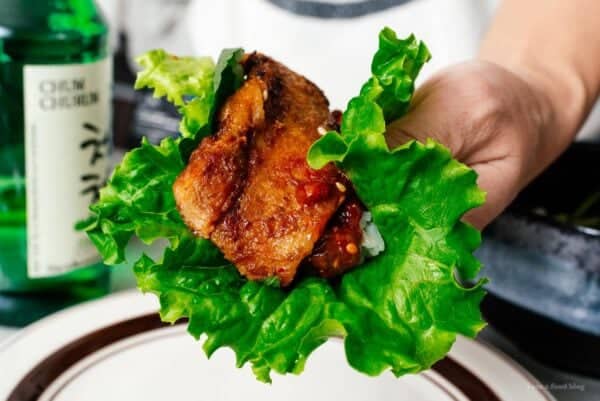
Why You Should Try Korean BBQ at Home?
Preparing Korean BBQ at home offers a plethora of benefits. Firstly, the freshness of ingredients is unmatched. You can choose high-quality meats and fresh vegetables, ensuring a healthier and tastier meal. Secondly, the customization aspect is a major plus. You have complete control over marinades, seasoning, and side dishes, allowing you to cater to your specific tastes and dietary needs.
Additionally, Korean BBQ at home is a fantastic way to involve the whole family. The interactive grilling process turns cooking into a fun, communal activity where everyone can participate. It’s an excellent way to bond, create lasting memories, and enjoy a delicious meal together. Plus, it’s often more cost-effective than dining out at a Korean BBQ restaurant, making it a win-win for both your wallet and your palate.
Essential Equipment for Korean BBQ
Hosting a Korean BBQ at home requires some essential equipment to ensure an authentic and enjoyable experience. Here’s a rundown of what you’ll need:
Types of Grills
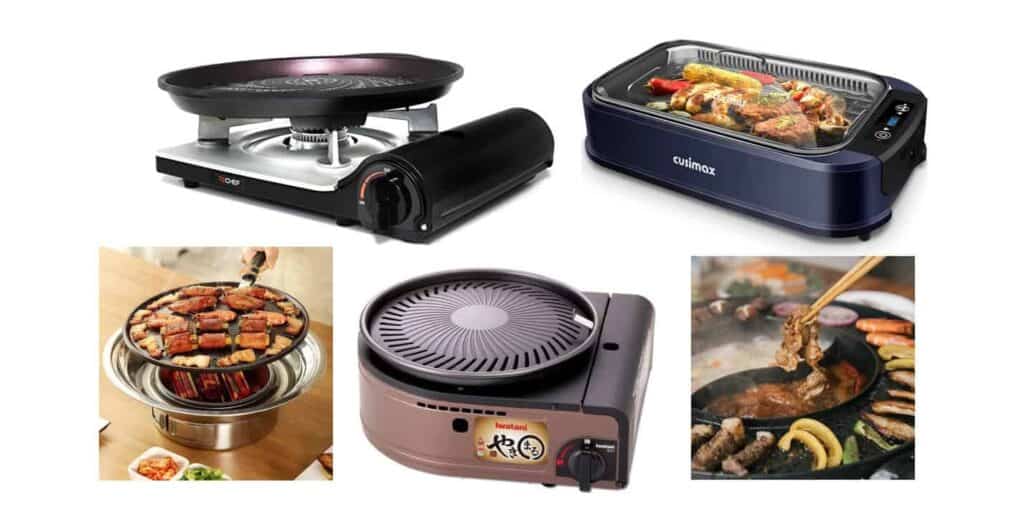
- Stove-Top Grills: These are perfect for indoor cooking. They are designed to sit on your gas or electric stove and come in various materials like cast iron or non-stick coatings. Stove-top grills are convenient, easy to clean, and great for smaller gatherings.
- Charcoal Grills: For those who love the smoky, authentic flavor, a charcoal grill is the way to go. These grills infuse the meat with a rich, smoky aroma that’s hard to replicate with other types. They require a bit more setup and maintenance but are well worth it for the traditional BBQ experience.
- Electric Grills: If you’re looking for convenience, electric grills are a great option. They can be used indoors or outdoors, heat up quickly, and are easy to control. While they might not provide the same smoky flavor as charcoal grills, they’re perfect for quick and fuss-free grilling.
Other Essential Tools
Tongs: A good pair of tongs is essential for flipping and moving meat on the grill without piercing it, which helps retain juices and flavor.
Scissors: In Korean BBQ, scissors are often used to cut meat into smaller, bite-sized pieces right on the grill. This makes it easier to manage and ensures even cooking.
Grill Pan or Plate: If you opt for a stove-top grill, having a grill pan or plate to catch drippings and prevent flare-ups is helpful.
Brushes: You’ll need a brush for applying marinades and sauces to your meat. A silicone brush is a great option as it can withstand high heat and is easy to clean.
Meat Thermometer: Ensuring your meat is cooked to the right temperature is crucial for both safety and flavor. A meat thermometer helps you achieve perfect doneness every time.
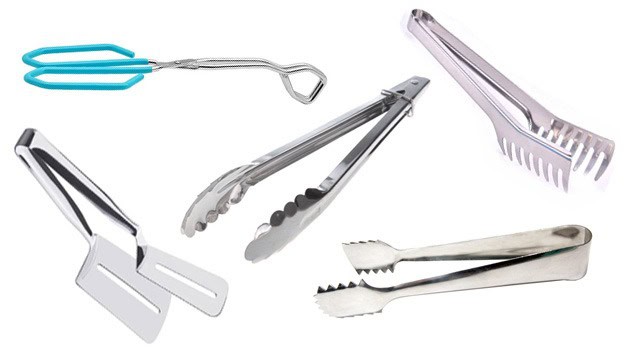


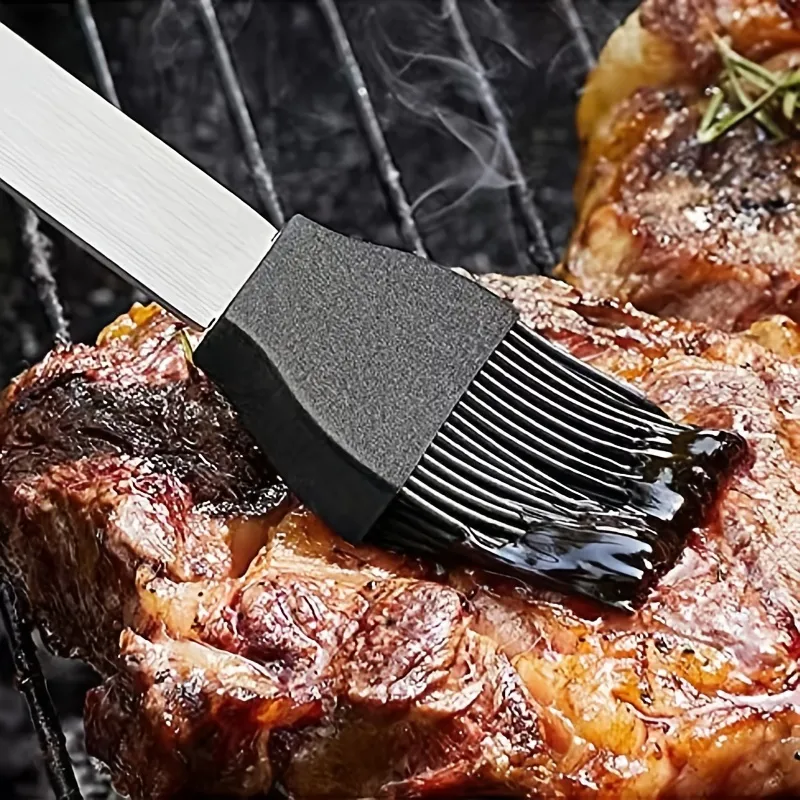

Best Meats for Korean BBQ
Choosing the right meats is key to a delicious Korean BBQ experience. Here are some of the best options:
Beef
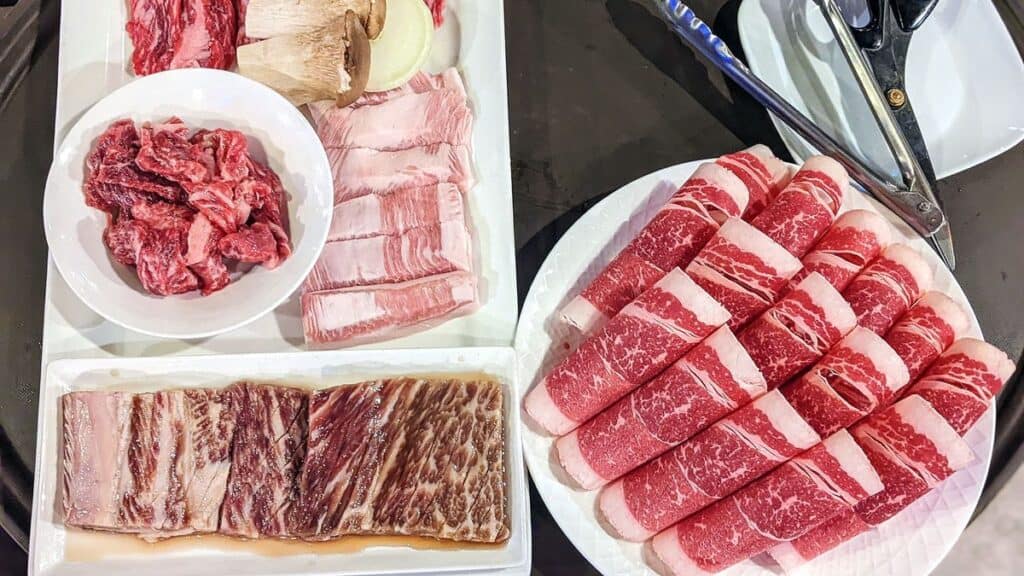
- Bulgogi (Marinated Sliced Beef): Thinly sliced ribeye or sirloin marinated in a mix of soy sauce, sugar, sesame oil, garlic, and other spices. It’s tender, flavorful, and a crowd favorite.
- Galbi (Short Ribs): These are beef short ribs marinated in a sweet and savory sauce. They’re typically cut across the bone for easy grilling and eating.
- Chadolbaegi (Beef Brisket): Unmarinated, thinly sliced beef brisket that cooks quickly and is often dipped in a simple sesame oil and salt mixture.
Pork
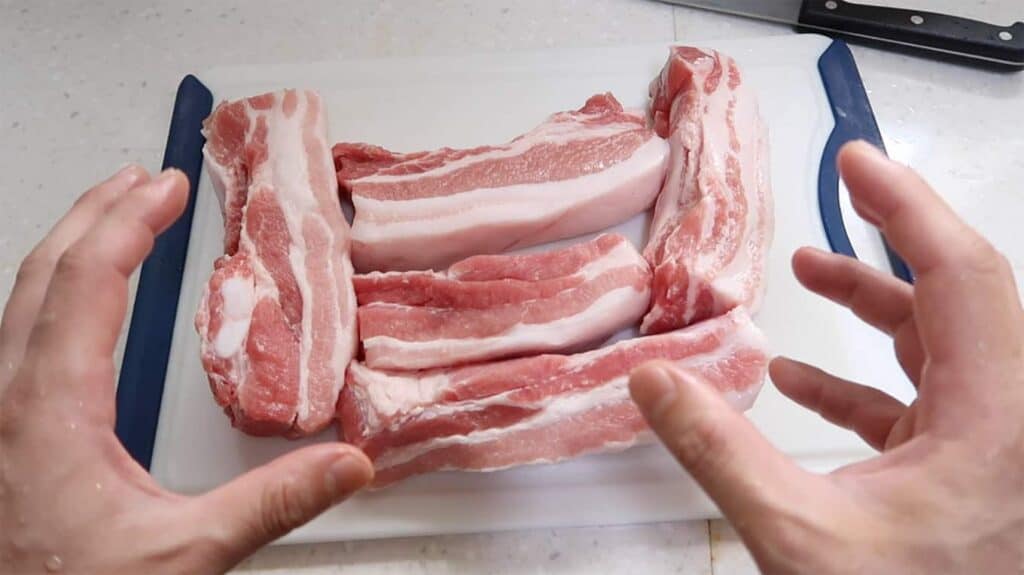
- Samgyeopsal (Pork Belly): Thick, fatty slices of pork belly that are usually grilled plain and dipped in a mix of sesame oil, salt, and pepper.
- Dwaeji Bulgogi (Spicy Marinated Pork): Pork shoulder or loin marinated in a spicy gochujang (Korean chili paste) sauce. It’s flavorful with a nice kick.
Chicken

- Dak Bulgogi (Marinated Chicken): Chicken thighs or breasts marinated in a sweet and savory sauce similar to bulgogi. It’s juicy and cooks quickly on the grill.
Meat Preparation and Portions
Proper preparation and portioning of meat are crucial for a successful Korean BBQ.
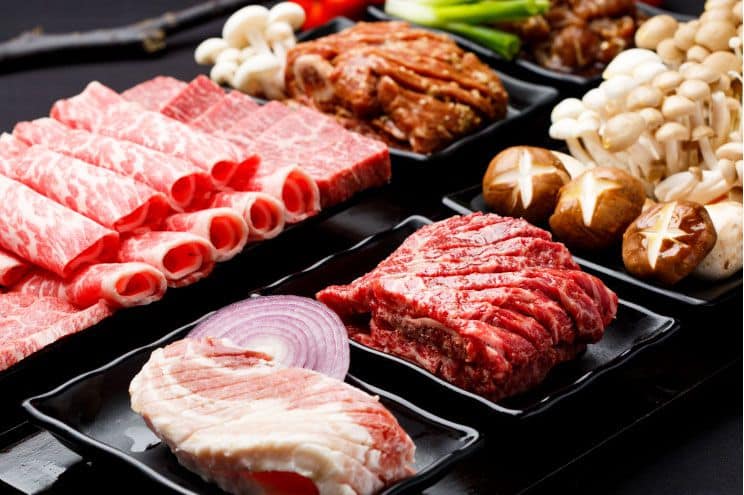
- Slicing: Thin slices are essential for quick cooking and better marinade absorption. Use a sharp knife and partially freeze the meat for easier slicing.
- Marinating: For the best flavor, marinate your meats for at least a few hours, but overnight is ideal. Make sure each piece is well-coated.
- Portions: Plan for about 200-300 grams (7-10 ounces) of meat per person, depending on the variety and number of side dishes.
- Scoring: For thicker cuts like pork belly, scoring the meat helps it cook evenly and allows the marinade to penetrate deeper.
Love BBQ? Try out Japanese BBQ with our guide on how to eat Japanese BBQ for a unique grilling experience.
Vegetables and Wraps
A Korean BBQ isn’t complete without a variety of fresh vegetables and wraps to complement the grilled meats. Here’s a look at the essential veggies and wraps you’ll need:
Vegetables
- Kimchi: Fermented cabbage or radish that’s spicy, tangy, and full of probiotics. It’s a staple side dish that pairs perfectly with grilled meats.
- Garlic: Whole cloves or thinly sliced garlic can be grilled or eaten raw. It adds a robust flavor and is often used in wraps.
- Green Onions: These can be grilled or used fresh. They add a mild onion flavor and a bit of crunch.
- Mushrooms: Varieties like shiitake, enoki, and oyster mushrooms are popular. They grill beautifully and absorb the flavors of the marinades.
- Zucchini: Sliced zucchini is easy to grill and offers a fresh, mild taste that balances the richness of the meat.
- Bell Peppers: Colorful bell peppers add sweetness and a bit of crunch. They’re delicious when grilled until slightly charred.
Wraps
- Lettuce: Green leaf lettuce or red leaf lettuce are commonly used. They’re sturdy enough to hold the meat and other fillings but tender enough to bite through easily.
- Perilla Leaves (Kkaennip): These aromatic leaves have a unique flavor, somewhat similar to mint and basil. They add a refreshing taste and a slight peppery bite to your wraps.
- Sesame Leaves: These leaves have a distinct taste that complements the rich flavors of the meat. They are slightly bitter and add an interesting flavor profile.
How to Use Wraps
To create a wrap, take a leaf of lettuce or perilla, add a piece of grilled meat, a slice of garlic, a bit of kimchi, and other desired vegetables. Top it with a dollop of ssamjang (a thick, spicy paste made from gochujang and doenjang) or other sauces, then fold the leaf around the fillings and eat it in one bite. This combination of flavors and textures is one of the joys of Korean BBQ.
Including a variety of fresh vegetables and wraps not only adds flavor and nutrition to your meal but also balances the richness of the grilled meats, making your Korean BBQ experience even more delightful.
Side Dishes (Banchan)
Banchan are small, flavorful side dishes that are an essential part of any Korean BBQ. They add variety, balance, and a burst of different flavors to the meal. Here are some common banchan you’ll often find:
- Kimchi: The star of Korean side dishes, kimchi is spicy, tangy, and packed with probiotics. Made from fermented cabbage or radish, it adds a punch of flavor to any bite.
- Pickled Vegetables (Jangajji): These include cucumbers, radishes, and garlic cloves, pickled in soy sauce or vinegar. They offer a refreshing and tangy contrast to the rich meats.
- Korean Potato Salad (Gamja Salad): A creamy and slightly sweet potato salad that’s a popular addition to the banchan spread.
- Bean Sprout Salad (Sukju Namul): Crunchy bean sprouts lightly seasoned with sesame oil, garlic, and soy sauce. It’s light and refreshing.
- Spinach Salad (Sigeumchi Namul): Blanched spinach seasoned with garlic, sesame oil, and soy sauce. It’s a simple yet flavorful side.
- Steamed Egg (Gyeranjjim): A fluffy and savory steamed egg custard that’s soft and comforting, often served in a hot stone bowl.
- Korean Pancakes (Jeon): Small, savory pancakes made from a variety of ingredients like green onions, seafood, or kimchi. They’re crispy on the outside and soft inside.
Korean BBQ Sauces and Marinades
The secret to a great Korean BBQ lies in its marinades and dipping sauces. Here are a few recipes to get you started:
Marinades
Bulgogi Marinade:
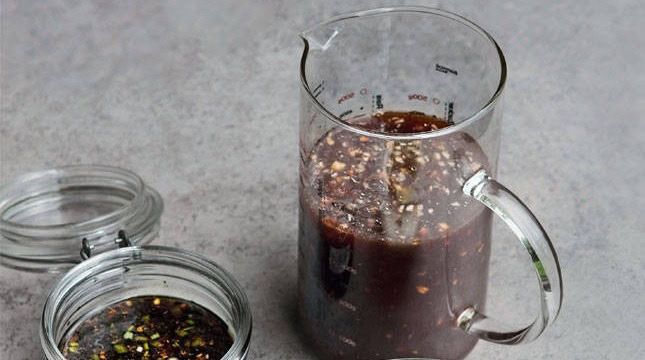
Mix all ingredients together and marinate thinly sliced beef for at least an hour, preferably overnight.
Spicy Pork Marinade (Dwaeji Bulgogi):
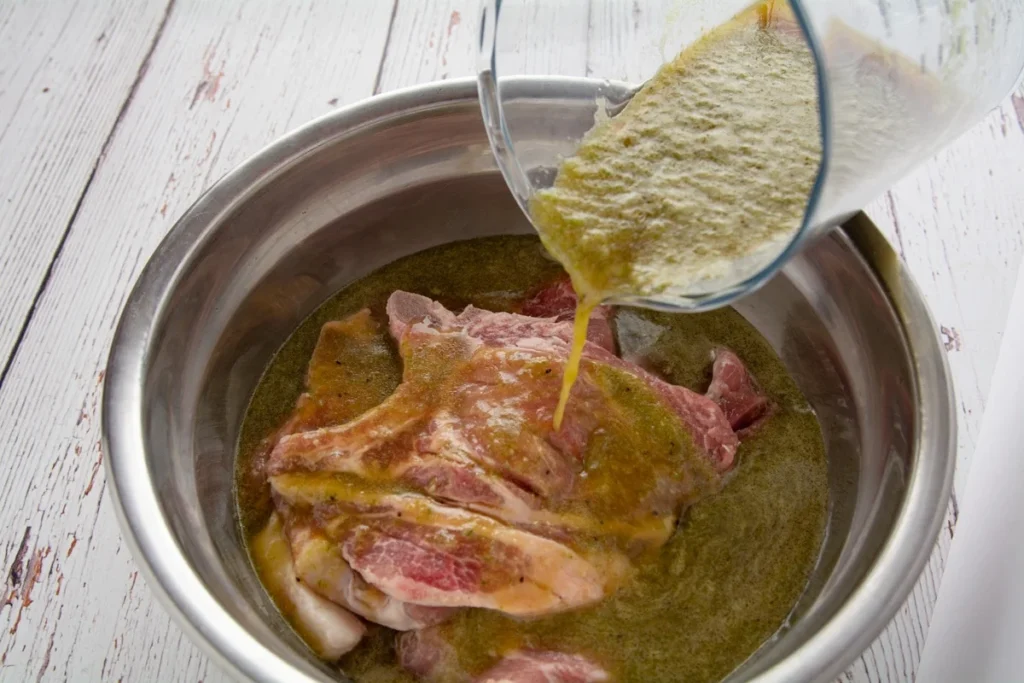
Mix all ingredients and marinate pork slices for at least an hour.
Dipping Sauces
Sesame Oil Dip:

Combine the ingredients in a small bowl. This simple dip is perfect for grilled meats.
How to Eat Korean BBQ?
Eating Korean BBQ is not just about enjoying delicious food; it’s also about embracing the cultural practices and etiquette that make the experience unique. Here’s a guide to help you navigate the art of eating Korean BBQ like a pro:
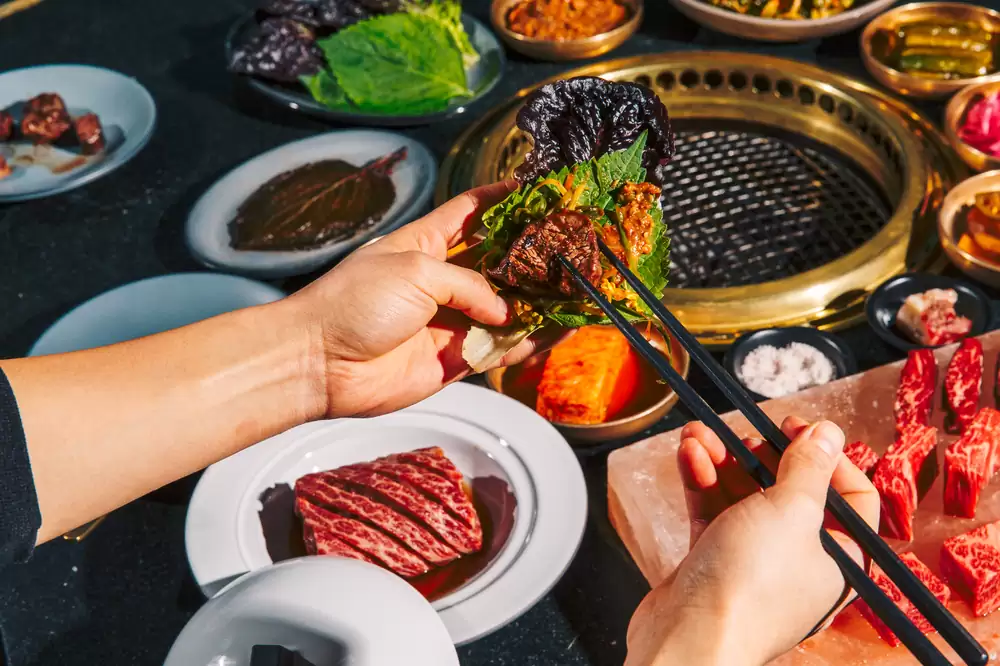
Table Manners
- Sharing is Caring: Korean BBQ is a communal meal. It’s customary to share the meat and side dishes with everyone at the table. Take what you need but be mindful to leave enough for others.
- Grilling Etiquette: Typically, one person, often the host or the most experienced griller, takes charge of the grill. If you’re not the one grilling, refrain from flipping or moving the meat without permission.
- Chopstick Use: Use chopsticks to pick up food from communal dishes. When taking meat from the grill, use tongs to place it on your plate, and then use your chopsticks to eat.
- Sauce Dipping: Avoid double-dipping in communal sauces. Instead, take a small amount of sauce and place it on your plate for personal use.
Making a Wrap (Ssam)
Creating a wrap, or ssam, is one of the highlights of Korean BBQ. Here’s how to do it:
- Choose Your Wrap: Start with a large leaf of lettuce or perilla leaf. Hold it in your hand like a small taco shell.
- Add Meat: Place a piece of grilled meat in the center of the leaf. You can cut it into smaller pieces with scissors for easier wrapping.
- Add Banchan: Add a bit of kimchi, a slice of garlic, and any other side dishes you like. Pickled vegetables and grilled mushrooms are great additions.
- Add Sauce: Top it off with a dollop of ssamjang or your preferred dipping sauce. Be careful not to overfill the wrap.
- Fold and Eat: Fold the sides of the leaf over the filling and eat the entire wrap in one bite. This way, you get a perfect mix of flavors and textures in every mouthful.
Drinking Etiquette
- Soju and Beer: Korean BBQ is often enjoyed with soju (a Korean distilled spirit) or beer. When pouring drinks for others, use both hands as a sign of respect.
- Receiving Drinks: When someone offers you a drink, hold your glass with both hands and slightly bow your head in thanks.
- Toasting: It’s common to make frequent toasts. Raise your glass, say “Geonbae” (cheers), and take a sip.
Drinks to Pair with Korean BBQ
Pairing the right beverages with your Korean BBQ can elevate the dining experience. Here are some excellent drink choices that complement the rich, savory flavors of the BBQ:
- Soju: This traditional Korean spirit is a must-have. It’s smooth, slightly sweet, and pairs well with grilled meats. Enjoy it neat or in cocktails like a refreshing soju-rita.
- Beer: Light lagers like Hite and Cass are popular choices. Their crisp, clean taste balances the rich flavors of the BBQ without overpowering them.
- Makgeolli: This milky, slightly sweet rice wine has a mild, tangy flavor that complements the savory and spicy dishes. It’s a great choice if you’re looking for something different.
- Wine: A light, fruity red wine like Pinot Noir or a crisp white wine like Sauvignon Blanc can also pair nicely, enhancing the flavors without clashing.
- Non-Alcoholic Options: For a non-alcoholic option, try Korean barley tea (bori-cha) or rice punch (sikhye). These traditional drinks are refreshing and help cleanse the palate.
Where to Buy Ingredients
Finding authentic Korean ingredients is easier than you might think. Here’s where you can source everything you need:
- Local Asian Markets: Visit your nearest Asian grocery store. They often have a dedicated Korean section with essentials like gochujang, doenjang, kimchi, and various cuts of meat suitable for BBQ.
- Online Stores: Websites like H Mart, Kim’C Market, and Amazon offer a wide selection of Korean ingredients. You can find everything from specialty sauces to fresh produce and meats.
- Local Butcher Shops: For high-quality meats, check out your local butcher. They can often provide the specific cuts needed for Korean BBQ, like thinly sliced brisket and pork belly.
- Farmers’ Markets: For fresh vegetables and herbs, farmers’ markets are a great option. You can find fresh lettuce, perilla leaves, garlic, and other veggies to complement your BBQ.
Setting Up Your Korean BBQ Night
Organizing a Korean BBQ night at home can be a fun and memorable experience. It’s a style of grilling meat at the table, typically featuring marinated beef or pork. Follow these steps to ensure everything goes smoothly:
- Plan the Menu: Decide on the meats, banchan, and drinks you’ll be serving. Make a list of ingredients and ensure you have all the necessary equipment.
- Set the Table: Arrange the table with a portable grill in the center. Provide plenty of small bowls for sauces and banchan. Ensure each guest has chopsticks, a pair of tongs, and a small plate.
- Prepare Ingredients: Marinate the meats a few hours ahead or the night before. Wash and cut vegetables, prepare sauces, and arrange banchan in small dishes.
- Fire Up the Grill: Preheat the grill and lightly oil it to prevent sticking. If you’re using a charcoal grill, light the charcoal ahead of time to ensure it’s at the right temperature when guests arrive.
- Cook and Enjoy: Start grilling the meat and encourage guests to participate. Show them how to make wraps with lettuce and perilla leaves, and enjoy the meal together.
- Serve Drinks: Pour soju, beer, or your chosen beverages and make a toast. Remember to follow the traditional etiquette of pouring and receiving drinks with both hands.
- End with a Sweet Note: Consider serving a simple Korean dessert like fruit, rice cakes, or sikhye to finish the meal.
FAQs
Disclosure: Our blog contains affiliate links to products. We may receive a commission for purchases made through these links. However, this does not impact our reviews and comparisons. We try our best to keep things fair and balanced, in order to help you make the best choice for you.

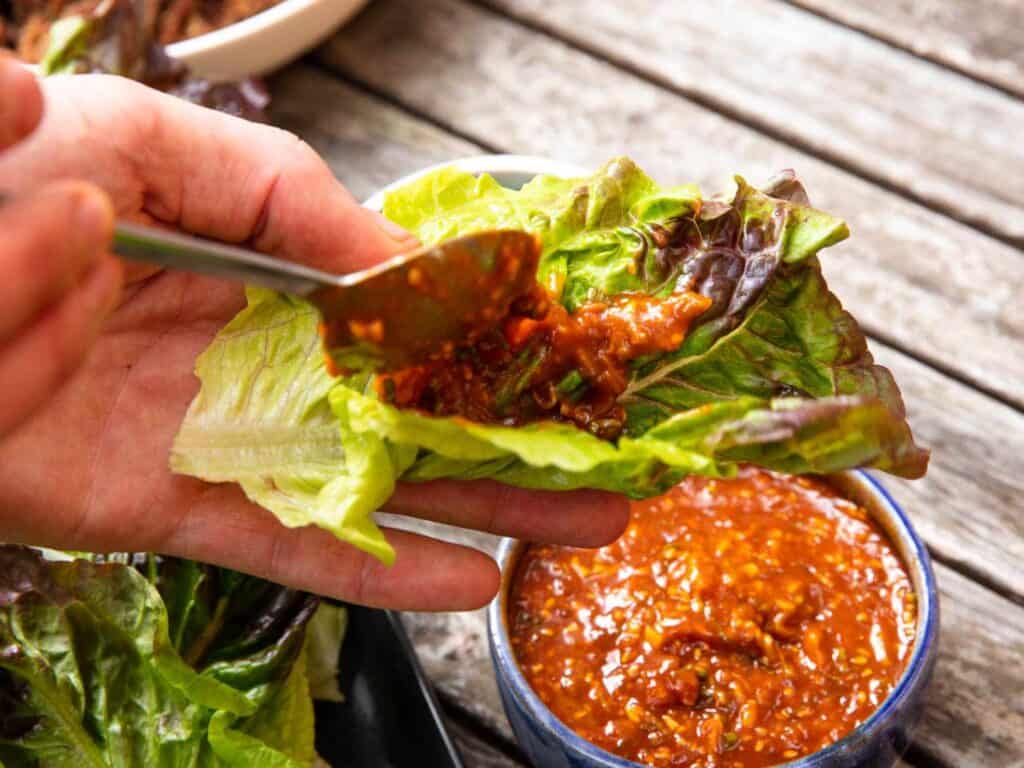
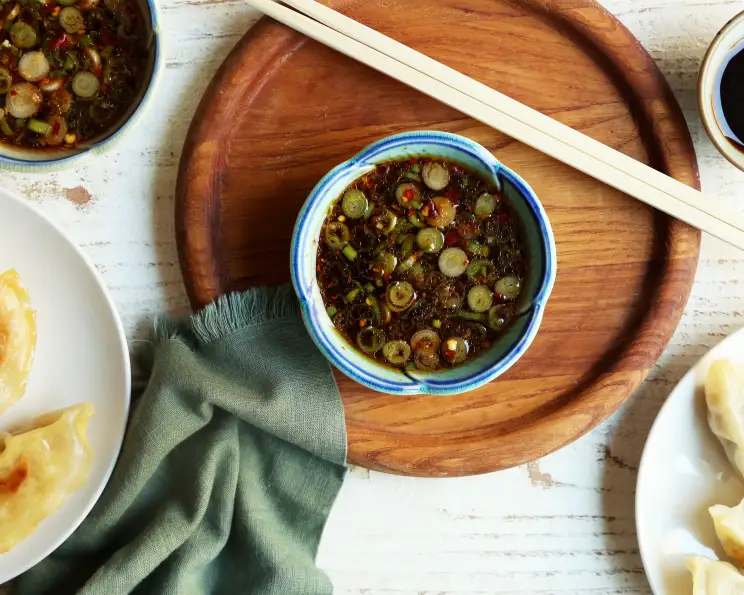
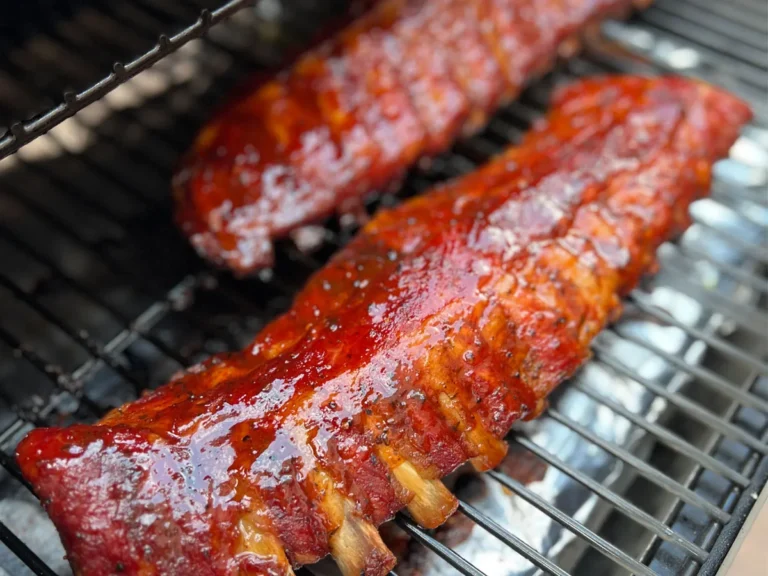
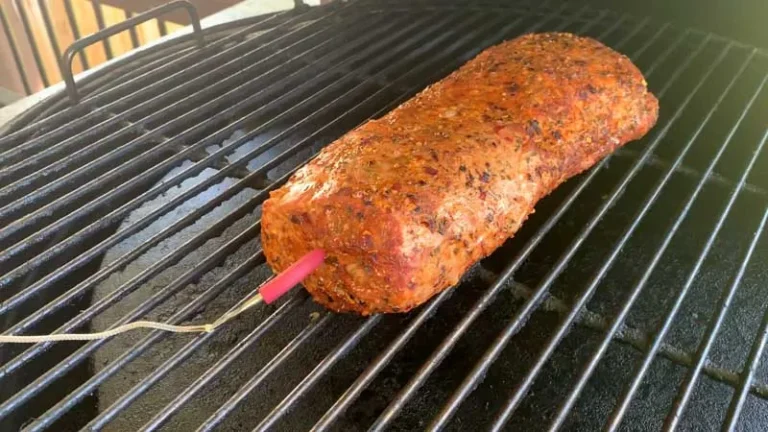
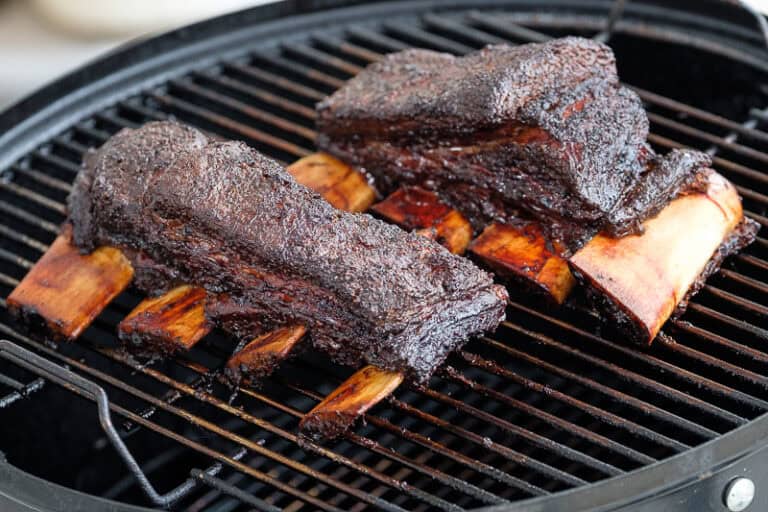

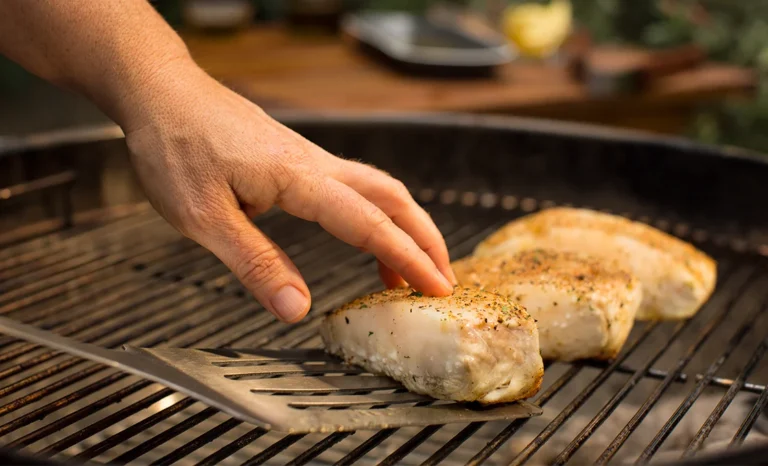
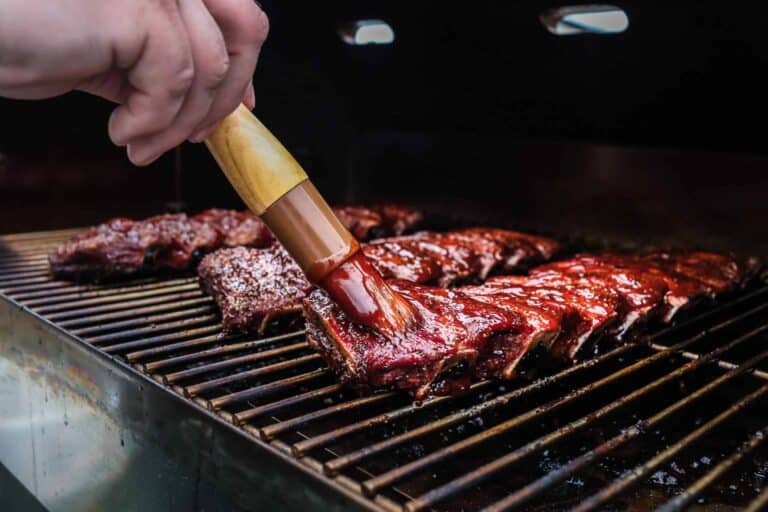
One Comment